Abstract
The diagnostic value of the pattern reversal evoked cortical potential (VEP) and the somatosensory evoked cortical potential (SEP) has been compared in 50 patients with established or suspected multiple sclerosis. A prolonged latency of VEP was found in 96% of definite cases of multiple sclerosis, 58% of probable cases, and 20% of possible cases. A prolonged latency of SEP by stimulation of median or peroneal nerves or both was found in 86% of definite cases of multiple sclerosis, 83% of probable cases, and 50% of possibe cases. When combining the results of all three tests the diagnostic yield increased to 100%, 92%, and 50%, respectively.
Full text
PDF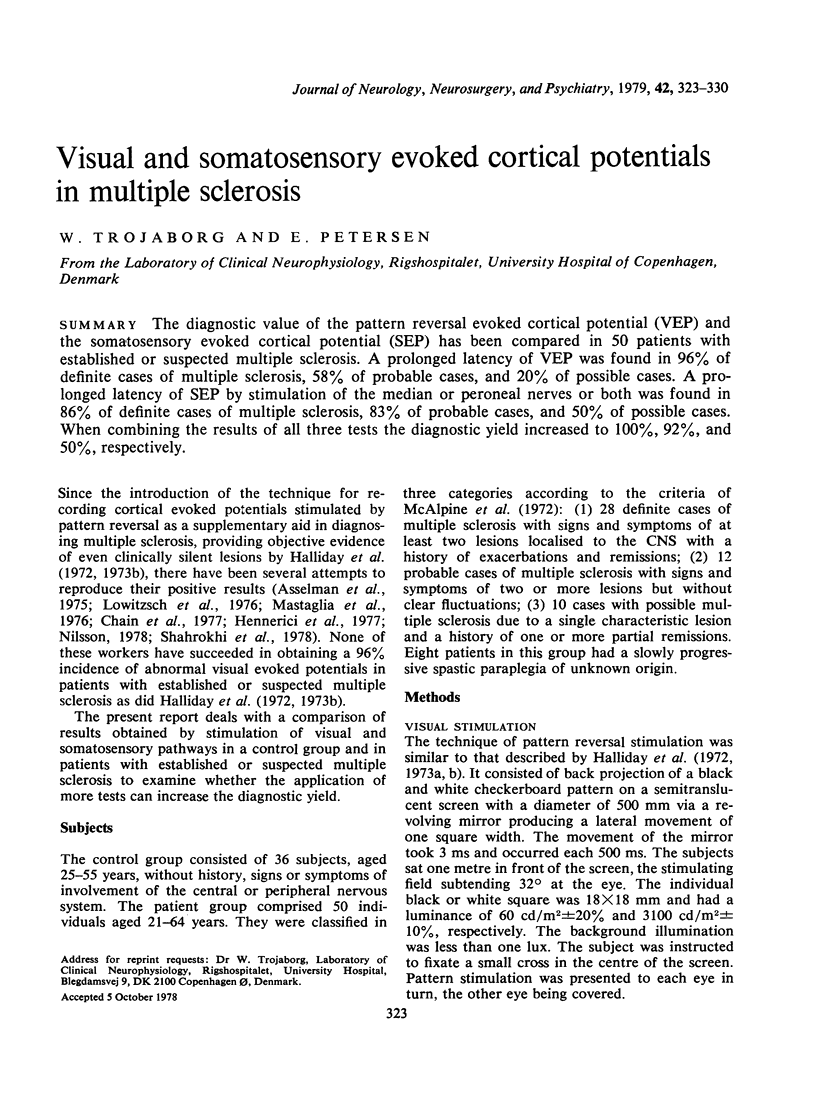
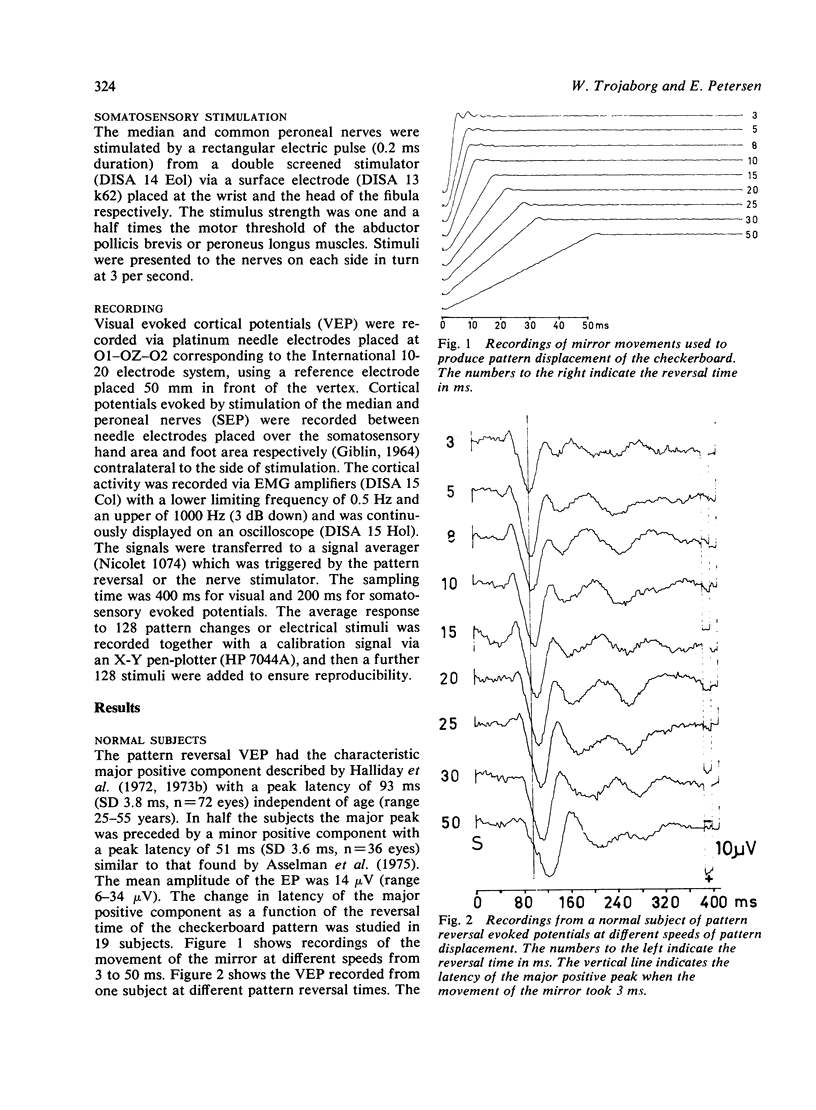
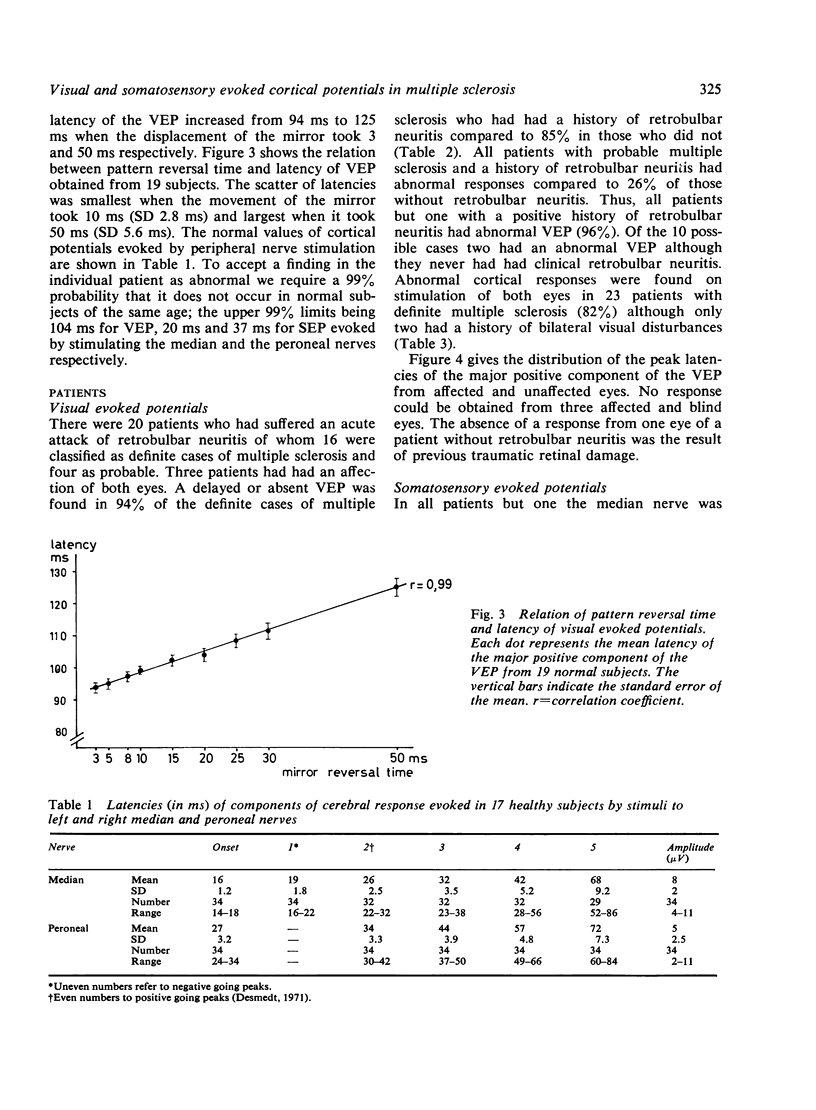
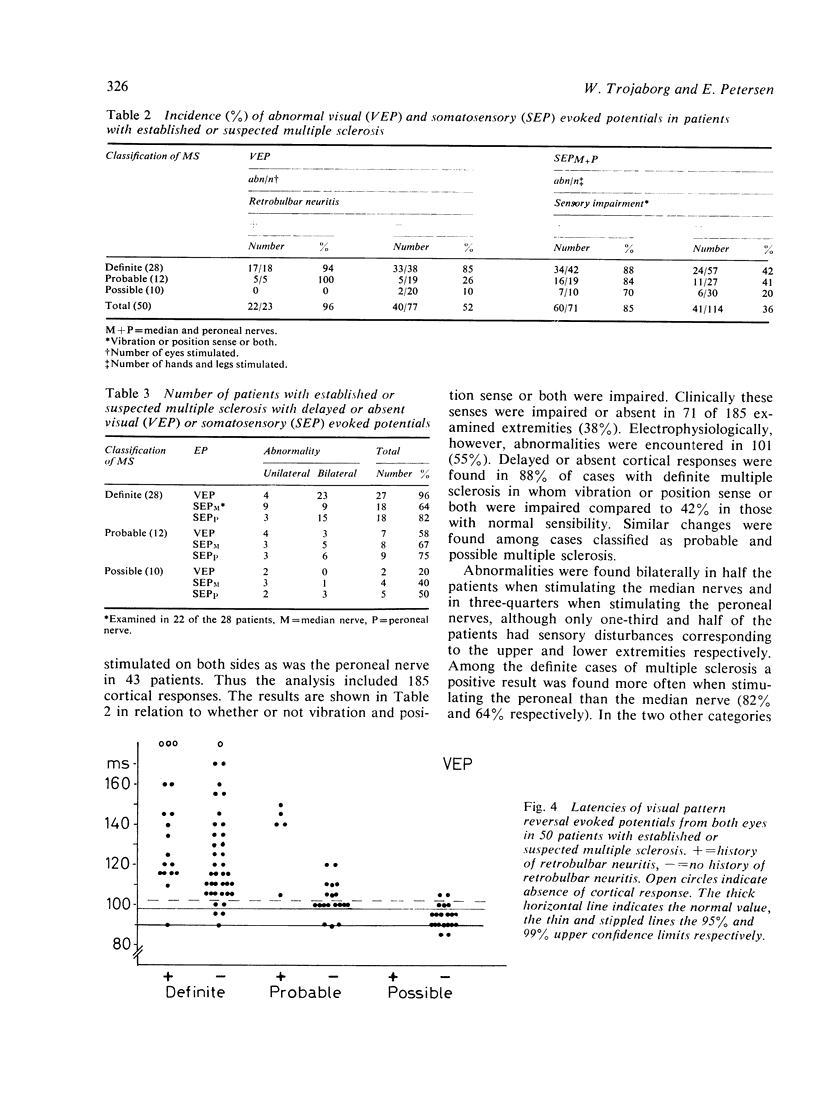
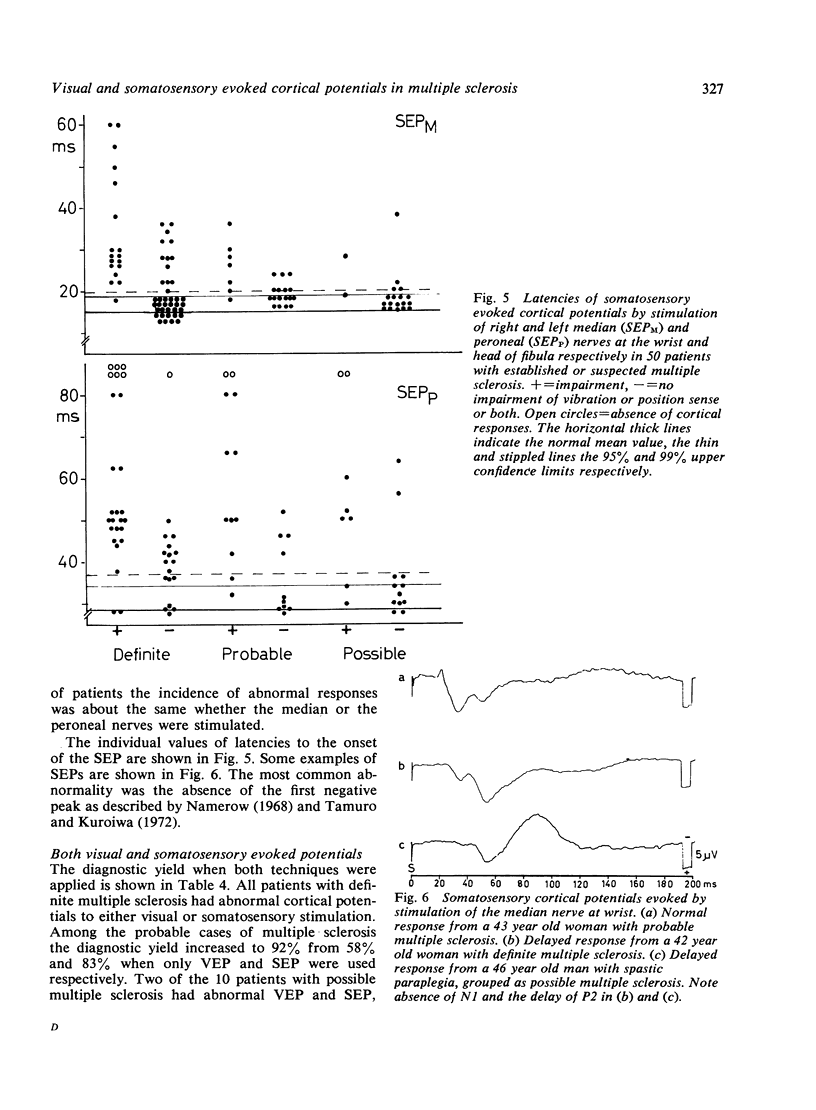


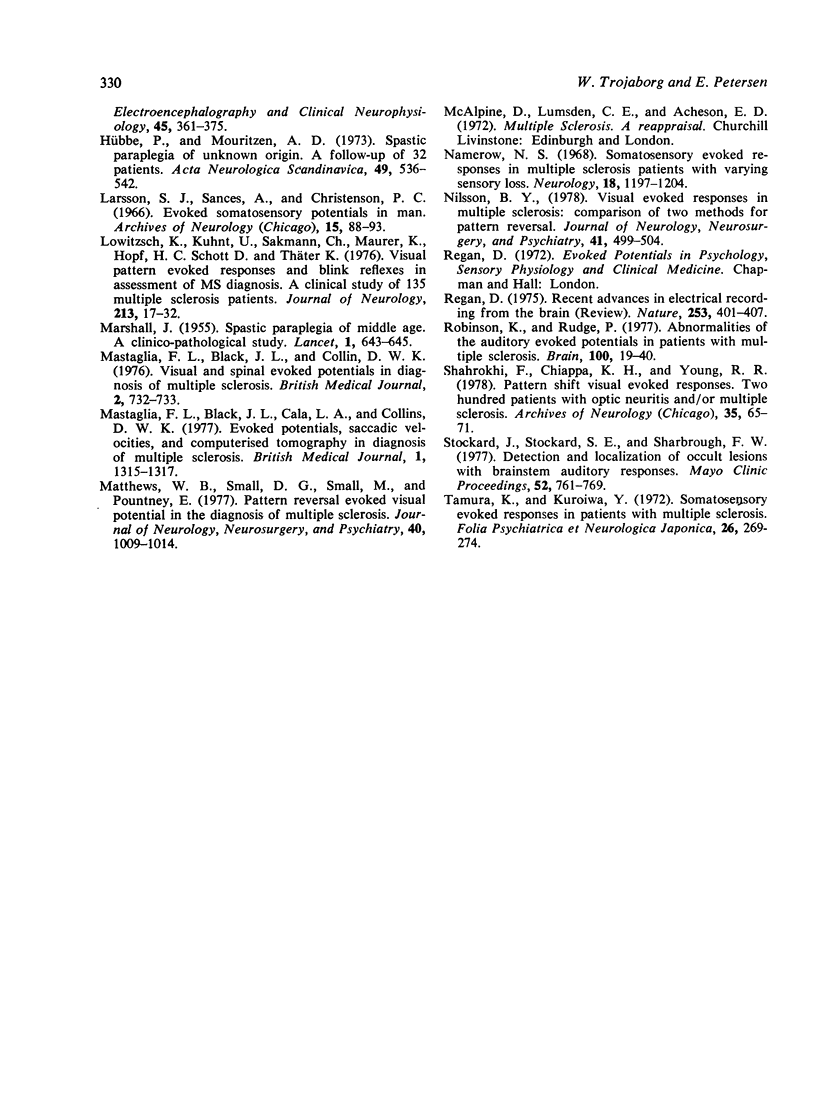
Selected References
These references are in PubMed. This may not be the complete list of references from this article.
- Asselman P., Chadwick D. W., Marsden D. C. Visual evoked responses in the diagnosis and management of patients suspected of multiple sclerosis. Brain. 1975 Jun;98(2):261–282. doi: 10.1093/brain/98.2.261. [DOI] [PubMed] [Google Scholar]
- Chain F., Mallecourt J., Leblanc M., Lhermitte F. Apport de l'enregistrement des potentiels évoqués visuels au diagnostic de la sclérose en plaques. Rev Neurol (Paris) 1977 Feb;133(2):81–88. [PubMed] [Google Scholar]
- GIBLIN D. R. SOMATOSENSORY EVOKED POTENTIALS IN HEALTHY SUBJECTS AND IN PATIENTS WITH LESIONS OF THE NERVOUS SYSTEM. Ann N Y Acad Sci. 1964 May 8;112:93–142. doi: 10.1111/j.1749-6632.1964.tb26744.x. [DOI] [PubMed] [Google Scholar]
- HALLIDAY A. M., WAKEFIELD G. S. Cerebral evoked potentials in patients with dissociated sensory loss. J Neurol Neurosurg Psychiatry. 1963 Jun;26:211–219. doi: 10.1136/jnnp.26.3.211. [DOI] [PMC free article] [PubMed] [Google Scholar]
- Halliday A. M., McDonald W. I., Mushin J. Delayed visual evoked response in optic neuritis. Lancet. 1972 May 6;1(7758):982–985. doi: 10.1016/s0140-6736(72)91155-5. [DOI] [PubMed] [Google Scholar]
- Hennerici M., Wenzel D., Freund H. J. The comparison of small-size rectangle and checkerboard stimulation for the evaluation of delayed visual evoked responses in patients suspected of multiple sclerosis. Brain. 1977 Mar;100(Pt 1):119–136. doi: 10.1093/brain/100.1.119. [DOI] [PubMed] [Google Scholar]
- Hume A. L., Cant B. R. Conduction time in central somatosensory pathways in man. Electroencephalogr Clin Neurophysiol. 1978 Sep;45(3):361–375. doi: 10.1016/0013-4694(78)90188-8. [DOI] [PubMed] [Google Scholar]
- Hübbe P., Mouritzen Dam A. Spastic paraplegia of unknown origin. A follow-up of 32 patients. Acta Neurol Scand. 1973;49(4):536–542. doi: 10.1111/j.1600-0404.1973.tb01326.x. [DOI] [PubMed] [Google Scholar]
- Larson S. J., Sances A., Jr, Christenson P. C. Evoked somatosensory potentials in man. Arch Neurol. 1966 Jul;15(1):88–93. doi: 10.1001/archneur.1966.00470130092010. [DOI] [PubMed] [Google Scholar]
- Lowitzsch K., Kuhnt U., Sakmann C., Maurer K., Hopf H. C., Schott D., Thäter K. Visual pattern evoked responses and blink reflexes in assessment of MS diagnosis. A clinical study of 135 multiple sclerosis/pathol. J Neurol. 1976 Jul 15;213(1):17–32. doi: 10.1007/BF00316336. [DOI] [PubMed] [Google Scholar]
- MARSHALL J. Spastic paraplegia of middle age; a clinicopathological study. Lancet. 1955 Mar 26;268(6865):643–646. doi: 10.1016/s0140-6736(55)90317-2. [DOI] [PubMed] [Google Scholar]
- Mastaglia F. L., Black J. L., Cala L. A., Collins D. W. Evoked potentials, saccadic velocities, and computerized tomography in diagnosis of multiple sclerosis. Br Med J. 1977 May 21;1(6072):1315–1317. doi: 10.1136/bmj.1.6072.1315. [DOI] [PMC free article] [PubMed] [Google Scholar]
- Mastaglia F. L., Black J. L., Collins D. W. Visual and spinal evoked potentials in diagnosis of multiple sclerosis. Br Med J. 1976 Sep 25;2(6038):732–732. doi: 10.1136/bmj.2.6038.732. [DOI] [PMC free article] [PubMed] [Google Scholar]
- Matthews W. B., Small D. G., Small M., Pountney E. Pattern reversal evoked visual potential in the diagnosis of multiple sclerosis. J Neurol Neurosurg Psychiatry. 1977 Oct;40(10):1009–1014. doi: 10.1136/jnnp.40.10.1009. [DOI] [PMC free article] [PubMed] [Google Scholar]
- Namerow N. S. Somatosensory evoked responses in multiple sclerosis patients with varying sensory loss. Neurology. 1968 Dec;18(12):1197–1204. doi: 10.1212/wnl.18.12.1197. [DOI] [PubMed] [Google Scholar]
- Nilsson B. Y. Visual evoked responses in multiple sclerosis: comparison of two methods for pattern reversal. J Neurol Neurosurg Psychiatry. 1978 Jun;41(6):499–504. doi: 10.1136/jnnp.41.6.499. [DOI] [PMC free article] [PubMed] [Google Scholar]
- Regan D. Recent advances in electrical recording from the human brain. Nature. 1975 Feb 6;253(5491):401–407. doi: 10.1038/253401a0. [DOI] [PubMed] [Google Scholar]
- Robinson K., Rudge P. Abnormalities of the auditory evoked potentials in patients with multiple sclerosis. Brain. 1977 Mar;100(Pt 1):19–40. doi: 10.1093/brain/100.1.19. [DOI] [PubMed] [Google Scholar]
- Shahrokhi F., Chiappa K. H., Young R. R. Pattern shift visual evoked responses. Two hundred patients with optic neuritis and/or multiple sclerosis. Arch Neurol. 1978 Feb;35(2):65–71. doi: 10.1001/archneur.1978.00500260003001. [DOI] [PubMed] [Google Scholar]
- Stockard J. J., Stockard J. E., Sharbrough F. W. Detection and localization of occult lesions with brainstem auditory responses. Mayo Clin Proc. 1977 Dec;52(12):761–769. [PubMed] [Google Scholar]
- Tamura K., Kuroiwa Y. Somatosensory evoked responses in patients with multiple sclerosis. Folia Psychiatr Neurol Jpn. 1972;26(4):269–274. doi: 10.1111/j.1440-1819.1972.tb01132.x. [DOI] [PubMed] [Google Scholar]


